Bella Napoli
After leaving Rome, we did an overnight passage to Naples and found ourselves faced with an anchoring dilemma. The best (and almost only) nice place for us to anchor near Naples was in a marine reserve. We had emailed the reserve for permission to anchor but they had not responded yet. We were exhausted after our overnight sail and wanted to drop the hook and get some shut eye.
We anchored on the border of the marine reserve, but it was neither comfortable nor too safe in our opinion. The next morning, we started for another anchorage in the reserve and as we approached the anchorage, we saw a German boat leaving so we hailed them on the radio and asked about the anchorage. They said that it was not a problem to anchor as long as you went ashore to a restaurant. Problem solved Italian style. (We have since kept in email contact with the German couple, who have provided us with extremely helpful information about places to go and where to anchor. Gotta love the cruising community – they help each other out.)
It turns out we never went ashore since we had a low pressure system come it was rainy and windy for the next two days. We then made our way closer to the Bay of Naples where we stopped in an anchorage that wasn’t beautiful but was calm (which is more important than pretty when you are tired). The next day we went into the marina in the town of Pozzuoli, a 20-minute train ride from Naples. It was incredibly expensive for an off-season berth (70 Euro per night), but it had 24 hour security (a good thing near Naples) and it also had a free washer/dryer. We didn’t complain.
Naples is not a beautiful city. For Italians, who have a heightened sense of aesthetic and appreciate beautiful things (views, food presentation, clothes, etc.) it’s a wonder how they tolerate so much trash in the streets, graffiti on the crumbling buildings (even the churches) and dog poo on the sidewalks. But you don’t visit Naples for its beauty. The true beautify of Naples is with its people and its food. Within the first hour of being in the city of Naples, Dante was having his cheeks pinched by an old man and we were eating “pizza fritta,” fried dough stuffed with mozzarella and tomato sauce.
As luck would have it, we were in Naples during its patron saint festival. Naples actually has 42 patron saints, but one in particular has a special significance. Twice a year, the “Miracle of San Gennaro” occurs, where Neapolitans witness the liquefaction of San Gennaro’s blood. The blood is encapsulated in a glass vial attached to a silver bust of the saint. The faithful carry these heavy silver busts of all 42 patron saints from the Duomo to the Basilica di Santa Chiara, including a bust of San Gennaro. Neapolitans are a superstitious lot, but perhaps with reason. They count on the liquefaction of the blood to bring good luck to their city. In recent past it hasn’t liquefied twice and both years the city suffered from it: one year they experienced an earthquake and the other year Vesuvius erupted.
We were lucky enough to see the procession and verify the liquefaction for ourselves. We sat in the Basilica di Santa Chiara with the natives and cheered and clapped along with them, glad that they were safe for another year.
The rest of our stay in Naples we wandered the old town, sampling their fried foods (breaded fried eggplant and zucchini, fried risotto balls, fried balls of macaroni and cheese), their sweets (baba – a pastry saturated in rum, sfogliatelle – a flaky pastry filled with sweetened ricotta cheese), and touring the sites (Archaeological Museum of Naples to see the Farnese Hercules, the Duomo, the Veiled Crist statue, the castle, other churches containing famous Carvaggio paintings) and marveling at the imposing Mount Vesuvius dominating the skyline.
Exploring the old city of Naples you can really imagine what it would have been like to live there in the 1800s or 1900s. Laundry is hanging between the closely-built buildings, the cobblestone streets are too narrow for cars, and small vendors sell fruit and vegetables on corners. Like elsewhere in Italy, people are walking arm-in-arm, gesticulating wildly while walking and talking on their mobile phone and old women in black clothes are keeping “Italain neighborhood watch” by standing on their terrace and looking on the street.
We went to castle atop a hill in Naples to look down on the port. Some of Darold’s family left Naples 110 years ago from that very port to go to the United States. Before World War I, Darold’s great grandmother and grandfather (on his mother’s side) went back to Italy to vacation. While they were there, World War I broke out. They had to stay until it was safe to return. Meanwile, Darold’s grandmother was born in Italy during that stay. (In fact, the house she was born in is still owned by Darold’s family in Italy. We’ve been there several times and will return on this trip.) Darold’s great grandfather went back to the U.S. and returned for the family when it was safe. When the family finally booked passage back to the U.S., they were waiting at the dock for their baggage. A trunk containing all of their belongings didn’t show up. Darold’s great grandmother refused to board the ship without the trunk, and so they stayed behind. It turns out that the ship was sunk by a German torpedo. That trunk is still in the family.
In the big wave of Italians who immigrated to the United States in the last turn of the 20th century, four of the five million came from Naples. Interestingly, Darold’s family in New York use the Neapolitan dialect when they speak Italian, cutting off the last syllable of many words. Moreover, many of the traditional foods loved by Italian Americans are Southern Italian or from Naples, including pizza, eggplant parmesean and fried items like zucchini fritti.
One day during ours stay in Naples we took the train to the ancient city of Herculaneum, destroyed in the same blast of Vesuvius as Pompeii. Herculaneum is smaller and better preserved than Pompeii and you really get a sense of what it might have been like living in the old Roman city.
We finished our stay in the Bay of Naples by provisioning in the town of Pozzouli. I went to the vegetable and fruit market and it was incredible. The volcanic soil in Italy is rich and perfect for growing the types of vegetables and fruits that happen to be my favorite: zucchini, eggplant, peppers, onions, fennel, artichoke, strawberries, cherries, melons, green beans, asparagus, and on and on. Everything is truly at the peak of freshness. Of particular mention are the tomatoes. I don’t know how the Italians do it, but they grow the sweetest and most flavorful tomatoes I’ve ever tasted. Dante will eat them by the kilogram. They have varieties of tomatoes I haven’t seen in the United States. I was also able to procure fresh olives – green and black. The green ones are fresh and you can buy them “picante” where they put a special hot seasoning on them. I then ventured to the bread stall (one focaccia and an Italian baguette, please!), then off to buy some Italian prosciutto and salami, and finally cheese: parmegiano reggiano, fresh mozzarella di buffalo, scamorza and provola. It is no wonder we have gained weight.
Provisioned up, the laundry done and Benevento topped off on diesel, we were ready to be at anchor and “marina free” for many weeks to come.
Check out all the photos from Naples on our Flickr site.
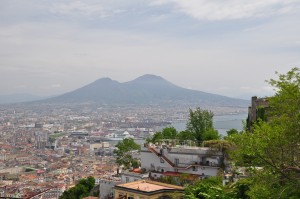
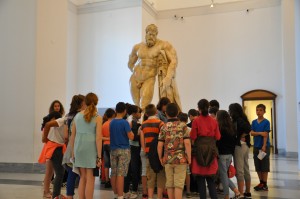

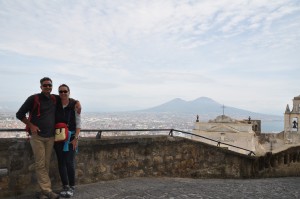

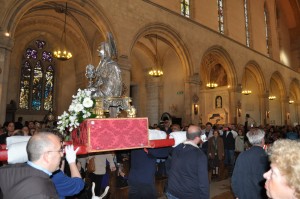
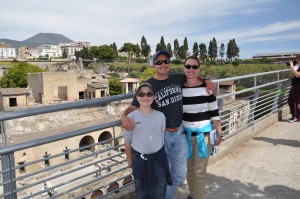
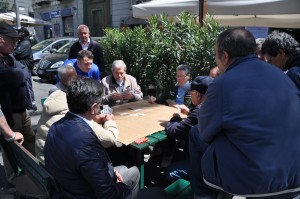
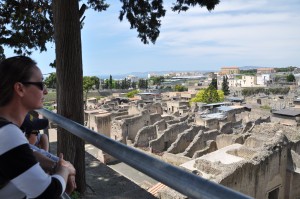
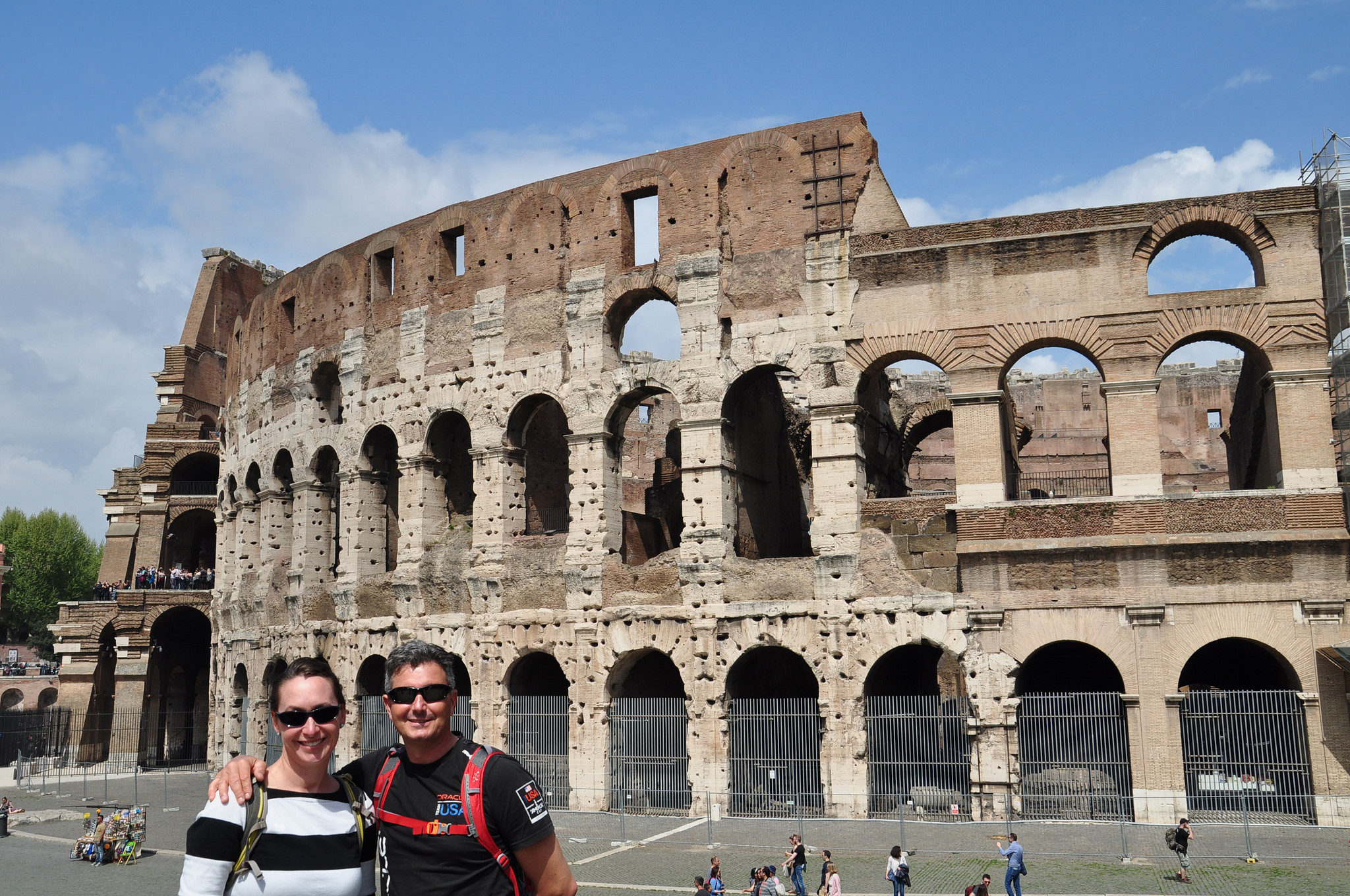

Darold